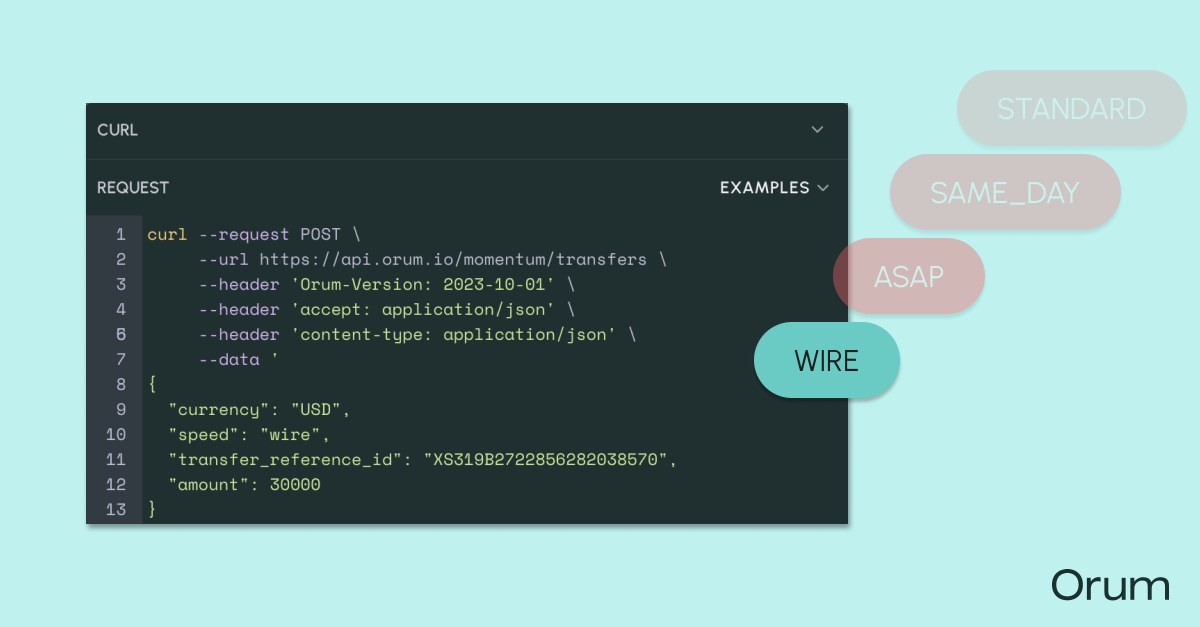
All payment rails are not created equal. Depending on what you’re trying to accomplish, you will learn that some rails won’t allow you to get your money where it needs to be exactly when you want it to arrive. You should control the speed, cost, and timing of how your money moves. That’s why we’ve taken our wire service and added it to our API, giving you another valuable option to programmatically optimize and orchestrate your money movement.
“Orum’s outbound wire service is now part of our unified API — a perfect choice for fast, reliable payments when you’re sending larger sums with time-sensitive windows.”
Let’s look at why the wire transfer API might make sense for you.
Put simply, outbound wire transfers move money electronically from one bank account to another. In the US, the Federal Reserve manages the network (known as Fedwire) that banks use to send and receive wire funds. Fedwire is a real-time, gross settlement system. Each transaction is processed individually and settled upon receipt via a highly secure electronic network. Settlement of funds is immediate, final, and irrevocable.
Talk with us today to get details about our wire transfer API pricing.
Wire transfers have two significant benefits: speed and transaction size.
Since a wire will only be approved if available funds cover the amount in your account, the recipient won’t have to wait for the transfer to be approved. For domestic wire transfers, funds generally get processed the same day the wire goes out — usually within a few hours. For reference, ACH transactions can take anywhere from 3-5 business days, and Same-Day ACH transfers must be submitted by 1:00 p.m. ET.
Regarding transaction size, wire transfers have no network limit, whereas an instant network like RTP has a $1 million limit. The other instant network, FedNow, has a maximum amount of $100,000 for a credit transfer. Financial institutions can lower or raise this credit transfer limit to $500,000.
In 2023, more than 193 million wire transfers were sent, with an average value per transfer of $5.62 million.
Let’s look at the pros and cons of wire transfers.
Fast: For domestic wires, the funds will usually be processed within 24 hours. This is due to the Expedited Funds Availability Act (EFAA), which requires financial institutions to process domestic wire transfers in a single business day.
Transaction size: Wires have no network limit.
Secure: Wire transfers are considered a safe way to send money because they are secured by the transfer service provider, which follows strict guidelines, and sent via a secure electronic network.
Dependable: When you send a wire transfer, the funds show up when and where they should.
Irrevocable: Wire transfers are considered final because they settle soon after being initiated and cannot be canceled once the funds are sent. However, being irrevocable can also be a pro, as business situations often require irrevocability, such as for a mortgage or refinance situation.
Costs: Most manual wire transfers cost as much as $50. These costs can be significantly lower when being executed programmatically through an API like Orum.
Unlock fast, reliable payments with Orum’s wire transfer API. Simplify integration, avoid costly bank processes, and verify accounts instantly.
Schedule a Demo to experience the benefits firsthand.